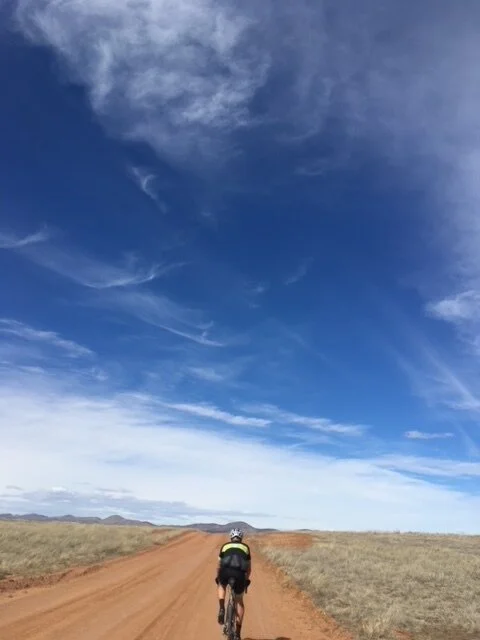The bumper sticker I want to make would say: Fear saves. Panic kills. A blank page that needs to be filled with a coherent message intimidates many students. For me the panic was always associated with math. Long division messed me up good in fourth grade. Junior high math crushed me. In each case, whether Ms. Khan, Mr. Lipman, or Mr Seitz, the teachers spoke and darkness clouded my thinking. Fear gave way to panic as I found myself lost in the forgein lands of long division and algebra. If it hadn’t been for the patient encouragement of my new math tutor guiding me out of the darkness, I would have succumbed, helpless to those math demons. These instances happen all the time in school and represent frightening journeys into the academic unknown for students. In order to learn we all must explore what lies beyond our known world. However, teachers can’t just throw students into the unknown (they often do, but we’ll get to that). When educators ask students to explore what lies beyond the maps they’ve constructed of their world, we have to encourage their exploration and tether them back to what they already know. Learning requires risk and a guide.
The first time I rolled my eyes at my mother happened soon after I told her I wanted to be an explorer. She looked at me and said I explore everyday when I learn something new. My eye rolling did not go over well. In typical Mary Jo fashion, she “discussed” with me how all learning involved exploring the unknown. Twenty some years later during a crisis intervention training, the instructor told us that an individual presents in crisis when they find themselves beyond the limits of their experience and knowledge. So it turns out my mother might have been right. It dawned on me that crisis and learning were two sides of the same coin.
Part of teaching involves helping students find the limits of their knowledge and to take a step or two beyond their known world (preferably without putting students into crisis). However, students often find themselves beyond the limits of their knowledge and experience alone - resulting in panic if not in the early stages of crisis. Easing them into the unknown may be more effective than throwing them into the unknown. Too often, however, teachers pressed for time throw students into the unknown and leave them to flounder and drown in uncertainty.
Listen, there’s nothing wrong with just jumping in - I learned to swim and ski that way. If you throw someone into the deep end follow up with formal and informal instruction. Many teachers, I fear, don’t have time to take this idea of students exploring their limits or the unknown seriously. Teachers and schools often lower expectations to remove uncertainty from the process of learning. Of course you don’t want to allow so much time to explore that you create a group of Hamlets who over think, over analyze, and become paralyzed in the possibilities. Like many aspects of teaching, there’s a carefully crafted middle ground for each teacher to find. A good rule of thumb to keep in mind about when to end any activity - stop while people are enjoying and involved in the work (quit while you’re ahead). This way students more willingly return to that project or activity.
So how can teachers and schools support students explore what lies beyond? Perhaps this connects to the larger question of how can we help individuals get comfortable being uncomfortable?
In 4th grade Mrs. Khan taught us long division. I was super excited since long division, in my mind, was what older kids did. That meant we were leaving the little kid world and joining the big league. I had basic division down so when she drew the ‘house of division’ on the chalkboard my enthusiasm must have burst a few synapses inside my head. As Mrs. Khan explained each step as she put the problem up on the board, but what I heard sounded a lot like the emergency broadcast system sounds. I had no idea what was going on. So when it was my turn to go to the board to practice a problem in front of the class...the suffocating darkness and social anxiety paralyzed me in front of my peers.
Not long ago I tried to run my age in miles. I wanted to see what would happen when I plodded my way past the 26th mile and beyond. It seemed like a good idea at the time. As I trained physically I prepped myself mentally. I considered the various unknowns I would deal with on the ’run.’ How would my body respond? What would hurt first? How could I deal with the different dark moments that would inevitably cross my mind? Oddly enough, I looked forward to dealing with the many unknowns more than anything. That turned out to be a good thing. As I crossed into the 28th mile I didn’t freak out when my knee and back began to argue. At mile 33 I ran out of water. Instead of going into a self defeating funk, I thought ‘well this is going to be interesting’ and started dreaming of finding a giant puddle in which I could lay down. I finished the last 15 miles in a zombie like walk/run combination and yet felt oddly good about things. It wasn’t pretty, but making the unknown known was gratifying.
Running into the unknown went way better than long division. What separates the two experiences? In 4th grade I was untethered. Nothing anchored me to prior knowledge or experience. Mrs. Khan’s voice echoed across an insurmountable distance. While plodding beyond mile 26 (running is too generous) I knew I could walk when I had to. I could see my apartment for the last 24 miles. And, I knew I could call an Uber if things went really sideways. Even though I saw more snakes (4) than people (0) for the last five hours and ran out of water 15 miles from the trailhead, I never panicked. For this journey into the beyond, I remained tethered to the idea that everything would be ok one way or another.
Back when I ran a climbing program for kids, we used to shake our heads every time we heard a parent or volunteer tell a kid “there’s nothing to be afraid of” as they got stuck on a wall or rock face. Those words remain near the top of my list of “Dumb Things People Say to Kids.” Of course there was something to be concerned about. Instead of ignoring fear we embraced it and included falling practice in our curriculum. We found that most of our students put so much energy into worrying about falling that they had little energy left to climb up anything. We created a supportive place for our students to ’fall’ in order to show them what would happen so that they could spend less energy worrying and more time pushing themselves upward. Our falling practice provided a ‘safe’ leap into the unknown. In both cases the individual remained tethered to their known world. Anchored to the known world individuals may be more willing to explore the unknown.
So how can educators create their own version of academic falling practice in their classroom. Rarely do I emphasize the solving phase of the educational practice equation. Too often, in my mind, people rush to name and solve issues without really understanding the issue at hand. Keep in mind that solutions are situational and specific to a group or community. However, the first step regardless of place and people is to build supportive relationships in your class. Teachers have to first work to shift the culture of learning so that taking risks and ‘failing’ are welcomed and supported behaviors within the workings of the classroom.
Everyone can create their own way of doing this. I go about this a few different ways. Usually I add “fail spectacularly” to my classroom expectations. Then I set this expectation in my emphasis on process over outcome (grades). It’s process, process, process. If your assessments focus on the what/how of learning and not getting things ‘right’ then academic stumbles become an essential part of the process and students are less likely to be paralyzed by fear of failure. Another strategy I use is to model failure and a willingness to journey into subjects or ideas in which I am not all that familiar. If I can show students what exploring what lies beyond looks like, more students are willing to go there themselves.
We all can do more to help students check out what lies beyond. Students (and teachers) often resist learning new skills or exploring unfamiliar topics. Many teachers have the same struggles. Learning involves a combination of major shifts and incremental changes in intellectual development. It would be great if we could all see ‘the unknown’ as an opportunity and not as a crisis. Students who panic when confronting new material that challenges their limits of understanding often shut down and remain in the comfy confines of their known world. Our job as educators involves helping each student break down their limits and become competent explorers of their world.

